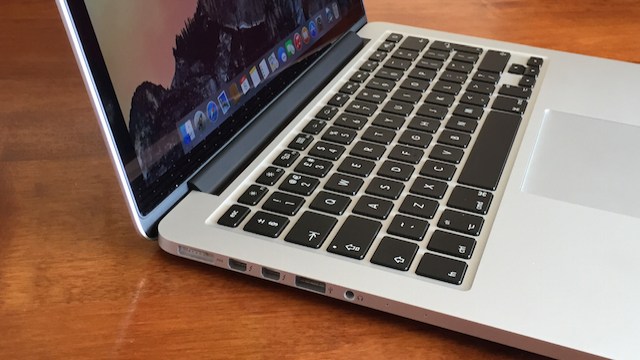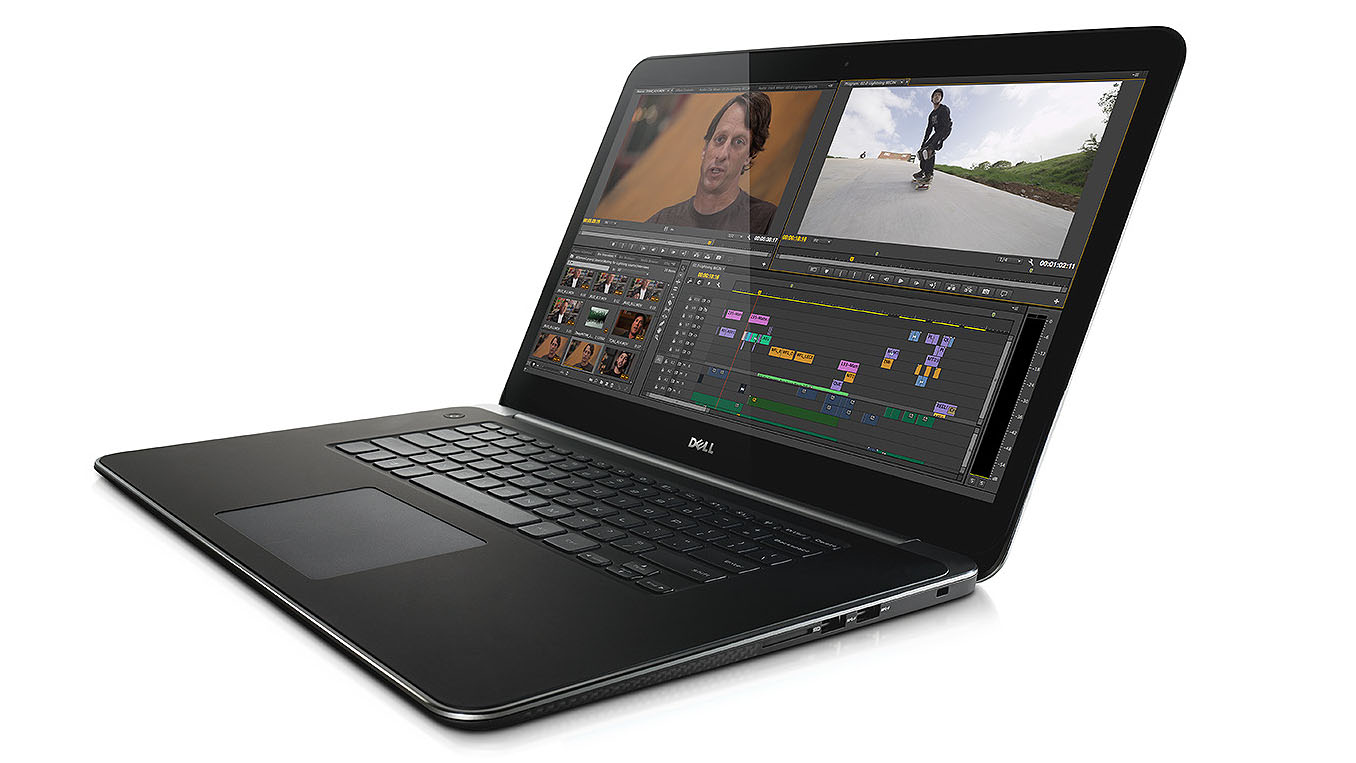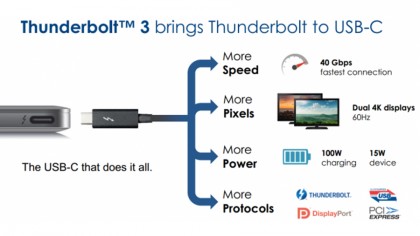Thunderbolt 2 vs USB 3.0 vs eSATA
What's the best way to connect your kit?

The high-speed Thunderbolt standard has been given a huge upgrade, and it can now deliver twice as much data through a single channel. But it isn't the only high-speed connection available: there's USB 3.0 and eSATA too. How do they compare, and what are they best for?
Thunderbolt 2 vs Thunderbolt 1: What's new?
The second generation of the Thunderbolt standard combines DisplayPort and PCI Express data and is faster than its predecessor – it can drive a 4K display with a single connector, and it delivers roughly twice the data speeds as its forerunner – but it has the same maximum bandwidth as its predecessor: 40Gbps.
The difference is in how that bandwidth is parcelled out. In the original Thunderbolt standard there were four one-way channels offering 10Gbps each – two upstream channels and two downstream.
With Thunderbolt 2, there are two bidirectional channels delivering 20Gbps each. That means a single channel has more than enough power to drive a 4K display or high-speed storage device, but if you want to do both things at once you'll need to devote a channel to each one as daisy-chaining won't give you enough throughput.
Thunderbolt 2 vs USB 3.0 vs eSATA: Speed
All three standards are much, much faster than USB 2.0, which tops out at 480Mbps. eSATA can deliver 6Gbps (older versions deliver 1.5Gbps or 3Gbps), USB 3.0 runs at up to 5Gbps and the incoming USB 3.1 should do 10Gbps. Thunderbolt can do 20Gbps.
As we've already explained above Thunderbolt 2 isn't actually faster than the original 10Gbps Thunderbolt standard, but if you wanted to get 20Gbps out of that you needed to combine two 10Gbps channels. You don't need to do that with Thunderbolt 2.
As with all maximum throughput figures, quoted speeds are theoretical maximums and don't take data overheads into account. The performance you actually get in the real world will also depend on your devices and their configurations.
Are you a pro? Subscribe to our newsletter
Sign up to the TechRadar Pro newsletter to get all the top news, opinion, features and guidance your business needs to succeed!
Thunderbolt 2 vs USB 3.0 vs eSATA: Compatibility
Thunderbolt combines two protocols, PCI Express (PCIe) and DisplayPort, which means you can connect monitors, external drives, video capture devices and so on. The DisplayPort element is backwards compatible, but you'll need a cable adaptor to connect an existing DisplayPort monitor. You can also connect DVI, HDMI and VGA displays via adapters, and if you use OS X you can network two Macs over a Thunderbolt connection rather than the traditional Ethernet.
Thunderbolt 2 uses the same connectors as the original Thunderbolt standard, so you'll be able to connect Thunderbolt devices to Thunderbolt 2 ports and/or cables and vice-versa. As with other standards' backwards compatibility, you won't benefit from the newer version's faster speed when you connect an older device.
That's worth remembering if you'll be connecting Thunderbolt and Thunderbolt 2 devices on the same chain – you'll need to put the original Thunderbolt devices at the end of the chain, not the beginning, or everything will run at Thunderbolt 1 speeds, not Thunderbolt 2.
USB 3.0 is backwards compatible, so you can connect USB 2.0 devices to a USB 3.0 hub and vice-versa, although of course you won't get USB 3.0 speeds from a USB 2.0 device or port. If you want to run multiple USB devices you'll usually need multiple ports or to invest in a hub – USB devices tend to be designed for standalone use, not daisy-chaining like many Thunderbolt devices.
eSATA is an external version of Serial ATA, the standard used for high-speed internal hard disk connections. Some firms, such as Toshiba, make laptops with dual-mode ports that can connect either eSATA or USB devices.

Thunderbolt 2 vs USB 3.0 vs eSATA: Availability
Thunderbolt 2 is largely confined to recent Apple computers (Retina MacBook Pro, Mac Pro, 5K iMac and late 2014 Mac Mini) and PC port adapters, although there are a few exceptions such as Dell's Precision M3800 workstation, which packs Thunderbolt 2 for its pro users.
USB 3.0 is widespread in PCs and PC peripherals, and is largely replacing eSATA for external devices such as hard disks. However, eSATA is still popular in corporate environments, not least because IT managers can use it to provide external storage on devices which have USB ports locked down for security reasons.
While Thunderbolt remains a fairly niche standard, that may change: the Thunderbolt 3 standard will embrace USB Type-C connections and the USB 3.1 standard later this year, supporting not just DisplayPort, HDMI and USB but also 40Gbps data transfer and two-way power delivery.
Intel says that more than 30 different PC designs will support Thunderbolt 3 from the off. It's possible that Thunderbolt 3 could become the one connector to rule them all – assuming, of course, that manufacturers decide to use it. Intel told us that Thunderbolt 2 would transform PC connections, and before that it was pretty excited about Thunderbolt 1. Maybe it's a case of third time lucky.

Thunderbolt 2 vs USB 3.0 vs eSATA: Which is best for you?
eSATA is perfectly fine if all you want to do is connect a PC to an external storage device, and it's a useful tool for corporate IT too. However, for end users USB 3.0 is taking over the world and driving down prices. For example at the time of writing a decent 5TB USB 3.0 external hard disk is less than £150 (around $235, or AU$310) compared to £250 (around $390, or AU$520) for a similarly specified eSATA drive with the same capacity.
Thunderbolt prices aren't that low yet, and if the ridiculous cost of Thunderbolt cables is any indication they probably won't get there any time soon – it's designed for a different market, a world of 4K video editing and high-speed highspeed data transfer and of pros who don't blink when someone tells them a 2m cable costs fifty quid. Its speeds leave USB and eSATA in the dust, and if you need to drive 4K displays, shove enormous quantities of data around or do both things simultaneously then Thunderbolt 2 is even more useful than its predecessor.
Writer, broadcaster, musician and kitchen gadget obsessive Carrie Marshall has been writing about tech since 1998, contributing sage advice and odd opinions to all kinds of magazines and websites as well as writing more than a dozen books. Her memoir, Carrie Kills A Man, is on sale now and her next book, about pop music, is out in 2025. She is the singer in Glaswegian rock band Unquiet Mind.
